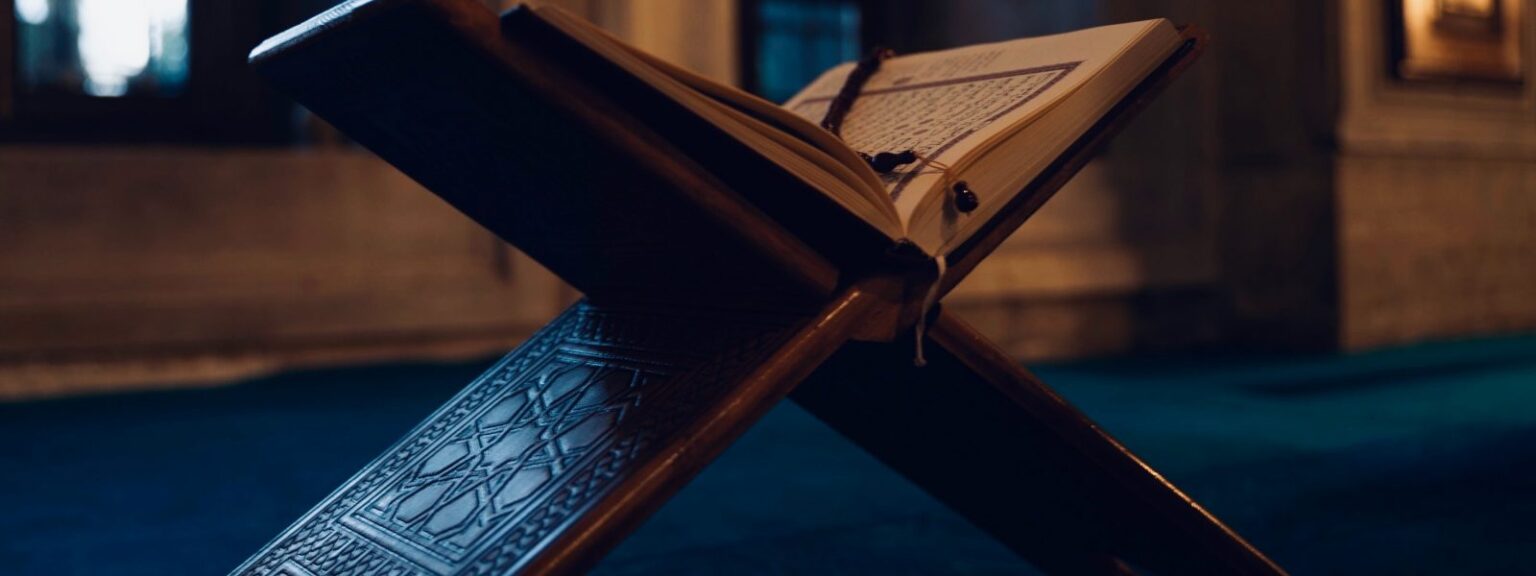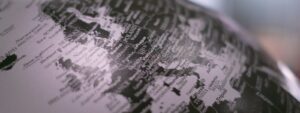To recall, in part one of this article I argued that secular power is pervasive because it operates at the level of cognition. It creates a sense of paralysis by conflating a secular situation with reality as the natural and insurmountable order of things. This, in turn, makes it impossible for consciousness to make the distinction between the [secular] world-as-it-is and an [alternate] world-as-it-ought-to-be. The brief mention of the notion that we must accommodate reality, in part one of this article, was intended to bring to fore another and perhaps the most powerful manifestation of power: reality-making. Let us expound on this notion of reality.
Secular Power and Reality-Making
As persons, we always find ourselves in a ‘situation’ be it familial, political, economic, and so forth. The situation can be favorable or unfavorable. To mediate these situations, we adopt an orientation predicated on an understanding of the situation and an envisioned course of action adjudicated against some normative or technical criteria. The situation is perceived to be contingent and surmountable, and as such, there exists the possibility of choice because we know that the situation could be otherwise. Reality, on the other hand, is not perceived to be a situation but rather merely the “way things are.” A reality is insurmountable and there is no perceived capacity for choice. A situation becomes a “reality” when we internalize an image of the self and the world as being normal and inevitable. This is an example of how power operates. The exercise of violence creates a situation but the exercise of formative power creates Reality. The Secular order does not present itself as one order among others, a historical or contingent possibility among other possibilities but as an inevitable and natural progression of reason as Reality. In internalizing its claims, we transform a colonial situation into a permanent and lived reality.
The problem with our conscription into the modern project and its images is obvious. It compounds the crisis in the Muslim world by using Islamic discourse to legitimize the myths of the secular order. The difference between non-crisis and crisis, as Sabet notes, is embodied in the difference between what is self-referential and what is other-referential. The former refers to the state wherein our ideals are mirrored in reality; our concepts justify a reality that emerges from that image. The other-referential refers to the state wherein Islamic concepts are used to justify endogenous realities of a world not of our own making, as is the case with the Muslim world today (Sabet, 2008, 1). For example, we find the increasingly popular idea that the so-called “neutral” space of the secular state correlates to the Islamic idea of shura, or that the ostensibly universal values of the modern state conform to the maqasid of the sharia’, or that the “public good” arbitrarily determined by the state is embodied in the concept of maslaha. In all three instances, Islamic concepts are used to legitimize the god-like sovereignty of the modern state. This state of affairs is best characterized by the Qur’an as a state of fitnah about which it says, “wa l-fitnatu ashaddu mina l-qatl (domination is worse than murder).” As Sherman B. Jackson aptly puts it fitnah “is plainly a cognate institution, a consciously preserved system of normalized domination” (Jackson 180, 2005). The image of the self and the world that is internalized, in turn, renders the Muslim motionless at both the level of cognition or awareness and at the level of praxis and action.
The Secular Age furnishes false optimism through an ostensible universal language of “freedom” and “choice” and conceals its inherent mechanisms of the total opposite: subversion and force. The gamut of choices is predetermined, demarcating what is possible and impossible, legitimate and illegitimate. The internalized images forged by the secular age create a “cruel optimism”, an optimistic attachment whose object is itself an obstacle to fulfilling the very wants that bring people to it (Berlant 2011, 227). That is, we invest a false hope in the supposedly “neutral” apparatuses of the secular state, only to find that we had to concede our normative commitments and, as the Arab Spring demonstrated, face violent repression. This, if anything, demonstrates the extent to which secular power is pervasive, in its capacity to shape our very sensibilities, hopes, and aspirations. In our current age, this cruel optimism or hope takes on two forms: political and apolitical. The former invests hope in the existing secular state. The latter invests hope in an apolitical strategy wherein we work “outside of politics” and focus on the Muslim individual and community. In both instances, hope becomes an illusory alternative to action. It is passive, impotent hope that exists alongside the prevailing hegemonic order.
Secular Power, its Metaphysical Horizons, and Oppression
Normalized domination cannot be understood exclusively at the political level. The secular does not only delimit our political horizons but extends beyond that: It delimits our metaphysical horizons. The ‘metaphysical’ here does not refer to abstract intellectual speculation but rather an existential orientation that defines man, God, and man-God relations. Metaphysics is the “unthought” background through which we think about and navigate the world. The core metaphysical commitment of modernity is the reoccupation of the sovereignty of God with the sovereignty of the world—sovereignty referring to the totality of possibilities. In its most moderate manifestations, the sovereignty of the world is grounded in a theology of providential Deism wherein God is alien to the world, leaving man to create imaginative and political orders through self-creation, rendering them “second-creators.” The very idea of an autonomous and “neutral” political space emanates from those metaphysical assumptions committed to the sovereignty of the world. The possibility of a politics grounded in God-consciousness becomes increasingly impossible. Thus, in our self-subversion to the political horizons dictated by the secular state, we are absorbed into its metaphysical horizons and occlude more radical possibilities. It is not only that we are re-created in the image of those “second-creators”—an act of erasure—but we also internalize an image of the world and God that emerges from this state of subversion.
The internalization of these images—“Reality”—is par excellence, the epitome of oppression. The root word for ‘oppression’, as Marilyn Frye, points out is the element ‘press’, “Presses are used to mold things or flatten them or to reduce them in bulk” (1983, 2). As we have already stated, power does not operate exclusively through violence. Rather, it mediates itself through the oppressed—in this case, the Muslim—in such a way as to make the Muslim think that these imposed images are his or her own. She argues that oppression is “a system of interrelated barriers and forces which reduce, immobilize, and mold people belonging to a certain group and effect their subordination to another group” (33). Oppression is to accept a prevailing situation as an insurmountable Reality—the “way things are”—or worse yet, to accept the situation as being favorable. As Frye (1983, 4) goes on to say:
“The experience of oppressed people is that living of one’s life is confined and shaped by forces and barriers which are not incidental or occasional and hence avoidable but are systematically related to each other in such a way as to catch one between and among them and restrict or penalize motion in any direction. It is the experience of being caged in: all avenues in every direction are blocked or booby trapped.”
The sense of being motionless, however, is not always explicit. It is concealed. What exactly does it mean to be motionless? This brings us to a critical point: In predetermining our cognition and action in the present, the oppressive secular order also always predetermines our future trajectory. To understand why we are motionless, we need to take a step back to understand the totality of forces at play. Thus, if we reduce our investigation of our oppression to one dimension at play, the separation of church and state, we might perceive the prevailing situation to be favorable, or at least not all that bad. On the other hand, when we recognize that this institutional separation is part-and-parcel of a broader metaphysical horizon, we can recognize that oppression is compounded by much larger and more grandiose forces operating at the level of cognition.
We must ask, then, what are the origins of secular power and its metaphysical origins? What are the grandiose power structures at play? Can we name them? To name these power structures means that we must historically situate secular power and its metaphysical horizons, not as some sort of natural or revealed order but as emanating from a distinctly historical and contingent project. But contingent onto what? It is contingent on a distinct and historical Eurocentric image of the world. That is to say, we must recognize that the image of the self and world imposed by secular power is not an absolute truth or “Reality” but rather one image among others. It emerges from the imagination of those “second-creators.” But how are we to account for the ability of those second-creators to make claims about what images constitute reality and our internalization of those images?
This accounts for the fact that whilst secularity is clearly a Eurocentric project, it has attained the status of universality and a “reality.” Ramon Grosfoguel suggests that it is the “ego-politics of knowledge” which conceals the speaker who assumes a God-like view (2012). This imperial being speaks, not in the name of Latin Christendom but in the name of humanity. This is an important point because it points to the fact that this self-declared universal project is not predicated merely on political and military hierarchies but more insidiously on epistemic hierarchies that privilege Western knowledge. The point that I am making here is that these images are not impersonal or objective but reflect the will and global designs of second-creators that we have identified as the Anglo-European man.
Beyond Fitnah: The Autonomy of Muslim Thought and Action
How are we to proceed? Let us, first, surmise what has been said so far. The emergent strategies of accommodation that uncritically accept the claims of the secular state to neutrality need to be problematized. Those adopting such strategies, we argued, become conscripts of western civilization. This means an uncritical acquiescence to secular power and its illusory claims to neutrality and universality. More so, it means that we are absorbed into the will of those second-creators and their metaphysical horizons. As such, these strategies of accommodation do not seek to challenge secular power but pursue a trajectory of an (unattainable) redistribution of power that leaves secular power intact. Worse yet, their use of Islamic terminology/concepts in trying to redistribute power only serves to legitimize secular power. Furthermore, we argued that this creates a state of oppression wherein we understand oppression as being molded into an image and that this oppression creates a state of fitnah: our subversion to a normalized and seemingly insurmountable state of cognitive domination. This leaves us with the question: What remains of our image, as an Umma, under such conditions of domination?
How are we to escape this state of fitnah, the cognitive state of domination that characterizes the place of the Muslim in a secular age? How are we to emerge from our state of paralysis in order to think and act towards Muslim autonomy? How are we to reclaim our image as an Umma? The first imperative is a retrieval of the negating power of consciousness, that is, our ability to negate the pre-defined given meaning of things and imbue them with new meaning. The retrieval of the negating power of consciousness amounts to a form of power. Thus far, we have spoken of power in rather bleak terms, power as domination, power-over. There is, however, another conception of power as power-to or power as empowerment that is made possible through consciousness. As we noted earlier, it is the power to act in concert with an image that is not internalized through domination but one which emanates from the self. Understanding power as empowerment necessities a level of critical consciousness. This critical consciousness is two-fold: autonomy of thought and action.
The first is the autonomy of thought. This means the retrieval of a negating consciousness that breeds an in-depth understanding of the world, and the secular order, exposing its contradictions and the oppressive elements therein. In our secular age, this means an exposition of how the secular order, far from being neutral and universal, operates through powers that seek to transform and subvert Islam and the Muslim subject to a narrow political and metaphysical horizon. We become aware of the actual origins and boundaries of those power structures (i.e. that they are not merely political but cognitive, that is, metaphysical and epistemic horizons). This is the first step towards the autonomy of thought that is necessary for the autonomy of action and vision.
The second step is the autonomy of action. This requires that the Umma reclaims its image of the self and the world, not as per understood by the secular age but through a return to its ontological vocation attested in the Qur’an: al-istikhlāf rooted in the metaphysics of tawḥīd, affirming the sovereignty not of a secular world but of God. Istikhlāf as the autonomy of action demands that we recall the idea of the Caliphate. That the possibility of such an idea is not only a distant prospect but a lived vision that reflects our image of self and world, and as actions that reflect those images. The autonomy of action, in turn, is not a strategy of accommodation or a new modus operandi vis-a-vis the ostensibly “neutral” secular state but one of empowerment and renewal. This will require a transformation, not only at the level of our thinking but also at the level of our hopes and aspirations. Rather than investing our hope in the secular order, we ought to take up action which promises new beginnings.
References
Berlant, Lauren. Cruel Optimism. Durham and London: Duke University Press, 2011.
Frye, Marilyn. The Politics of Reality: Essays in Feminist Theory. Freedom, California; The Crossing Press, 1983.
Grosfoguel, Ramón. “Decolonizing post-colonial studies and paradigms of political-economy: Transmodernity, decolonial thinking, and global coloniality.” Transmodernity: Journal of Peripheral cultural production of the Luso-Hispanic World 1.1 (2011)
Jackson, Sherman A. Islam and the Blackamerican: Towards the Third Resurrection. Oxford: Oxford UP, 2005. Print.
Sabet, Amr G.E. Islam and the Political: Theory, Governance, and International Relations. London: Pluto Press, 2008.




